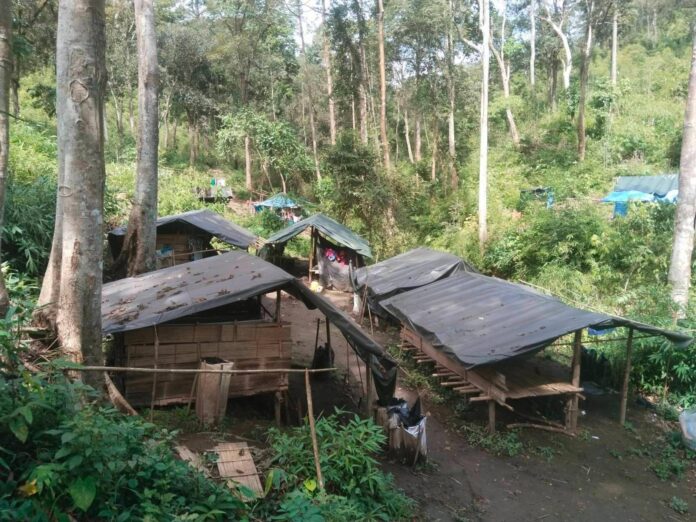By Kantarawaddy Times
One of the internally displaced persons (IDPs) camps along the Thai-Karenni border has been facing water shortages as the hot season approaches, and there are worries that the scarcity of water could lead to diarrheal diseases, said Esther, the camp’s health director.
“If there is a scarcity of water and if water is cut off, then it could affect our health in many ways. However, the main and the most vulnerable impact would be on the spread of diarrheal diseases and spread the infection of skin disease. Consequently, this could also lead to deaths,” said Esther, the health officer at the IDP camp.
There are two water storages at the IPD camp where water is currently stored, but there isn’t enough water, so people have to fetch water that is far from the camp, said the IDP camp committee leader.
“Currently, the two water tanks that we have built will probably last until the end of this month. During March to April, IPDs will have to go far to fetch water from very far away. All the water nearby will have dried out within this month. If we go on foot, it takes 45 minutes to go,” he said.
People have to use a very limited amount of water. If they do not use the amount of water they need, there can be additional harmful effects on mothers and infants, Esther added.
“In situations where breastfeeding is inadequate, dehydration may occur as a secondary effect. Then the child may face nutritional deficiencies if the mother does not produce good quality milk for her child. It is dangerous for a child. The child’s immunity is not like adults, so they need to get the nutrients and the hydration that they need from their mother,” she added.
The average daily water consumption per day for a person is between 1 to 3 liters of water; however, it has been reported that people in the IDP camps mainly use water for cooking and soup rather than for drinking. It has also been reported that water is scarce in the conflict-affected areas, and the scarcity of water leads to the increasing infection of skin diseases due to low personal hygiene. It has been reported that the IPDs have a population of over 2,000 people.



